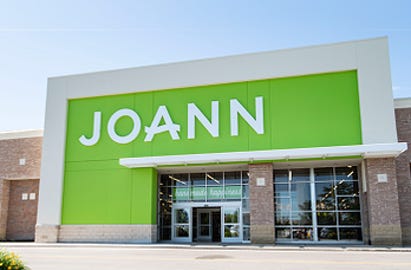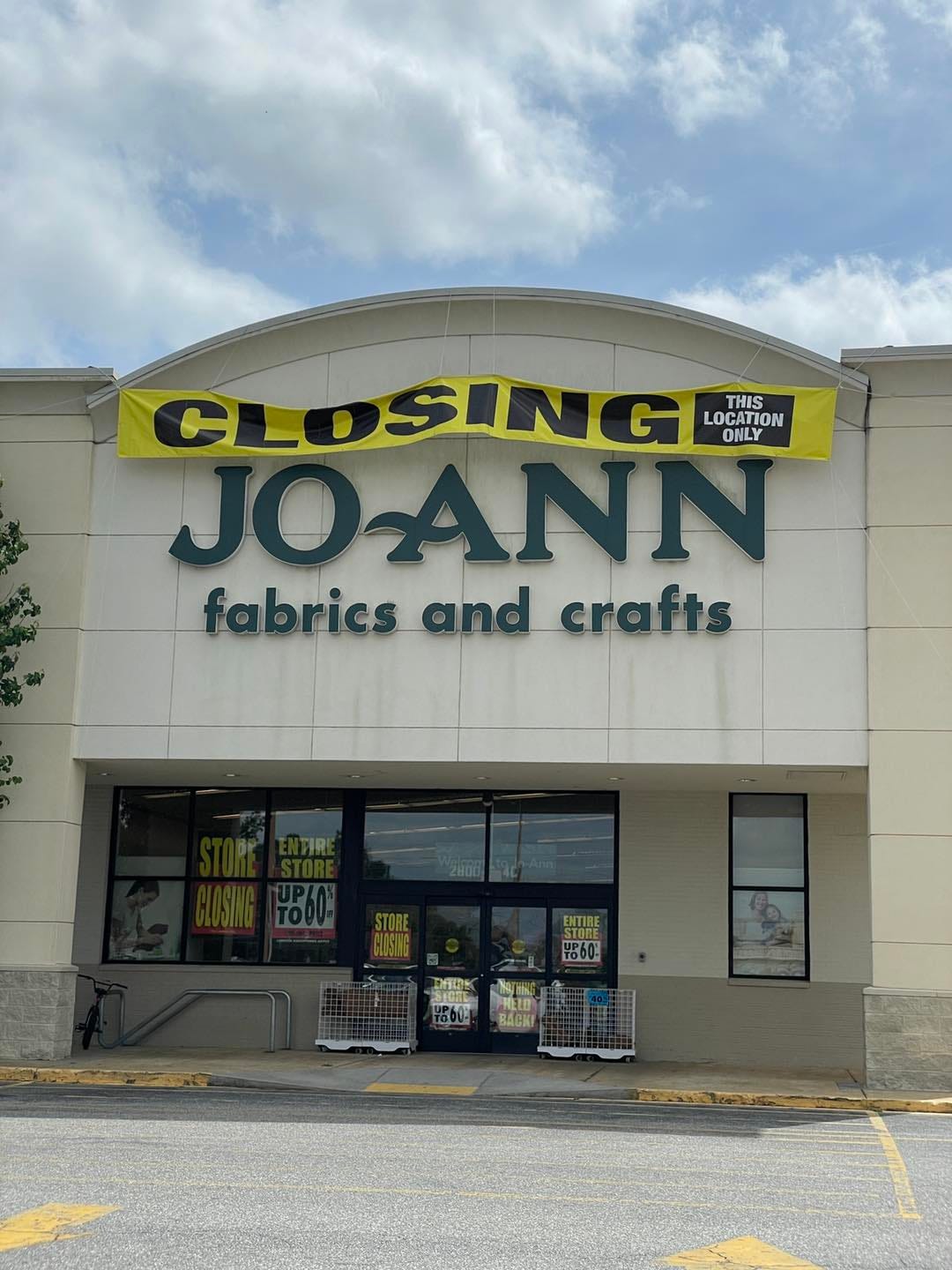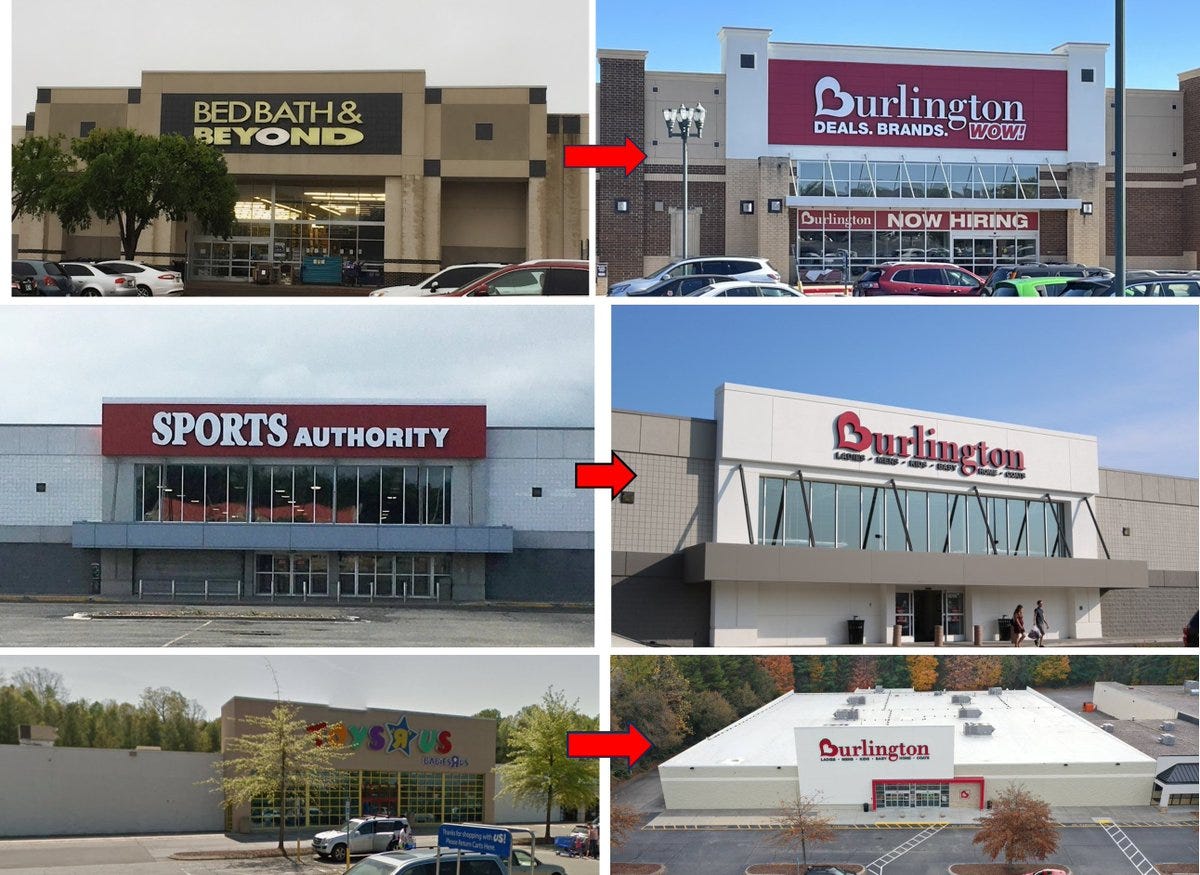How Will Retail Landlords Fare If Craft Retailer Joann Inc. Liquidates in Bankruptcy?
Craft retailer Joann filed for its 2nd Chapter 11 bankruptcy in as many years last week; what happens now to landlords of its 800+ retail stores?
Last week craft and sewing retailer Joann Inc. filed for bankruptcy.
Again.
It is the second bankruptcy filing in two years for the Ohio-based retailer.
And this time the continuation of its business as a going-concern is very much in question — which could leave the landlords of its real estate in the lurch.
It was only 10 months ago that Joann Inc. filed for Chapter 11 bankruptcy with a “prepackaged” plan to quickly emerge as a private company owned by its creditors.
Within six weeks Joann Inc. emerged from bankruptcy and:
Reduced its debt from $1.1 BB to ~$505 MM
Obtained $153 MM in new financing
Fully paid its obligations to employees, vendors, landlords, and trade creditors
Maintained over 18,000 employees
And — despite the ability to walk away from unattractive leases or poorly performing stores without penalty — the Company kept all of its 800+ retail stores.
Joann Inc. noted that its real estate costs and store locations were not core to its problems but instead critical to its potential turnaround and claimed:
~96% of its stores were profitable on a “4-wall” basis
~80% of stores generated contribution margin of >10%
Just ~4% of its stores were located in malls
~1/3 of its unprofitable sites were actually new stores in a sales ramp up period
Even when including its small number of unprofitable sites, Joann Inc’s stores collectively generated a 16% contribution margin in the 12 months of operations prior to its March 2024 bankruptcy.
Joann Inc.’s stores were not only profitable, but they also offered a competitive advantage and differentiator for its business.
Especially versus e-commerce players like Etsy.
And the stores were critical to Joann Inc.’s ability to maintain a 30% share of the ~$37 BB craft and sewing space.
Joann Inc.’s fleet of Big Box stores enabled it to stock tens of thousands of SKUs, cost effectively fulfill online orders and allowed for experienced employees to provide “hands on” support to customers in the visual and tactile world of sewing and craft projects.
While the Company offered online sales, the Joann stores accounted for ~86% of the Company’s revenue.
But Joann Inc.’s creditors-turned-owners quickly ran into additional trouble after exiting from bankruptcy in April 2024.
Unanticipated delays in sourcing and securing inventory — as well as inflation, high interest rates, and a sluggish retail economy — crimped its cash flow and left the Company unable to service its debt.
Some vendors simply refused to supply product while others reduced the inventory that was directed to the Company.
This led to low in-stock levels and the inability to meet customer demand.
Lower sales meant reduced cash flow and Joann Inc. was unable to service even the reduced level of debt the Company had restructured in its first bankruptcy.
Joann Inc. searched for fresh capital — or a Buyer — but, having failed to secure either, opted to again file for Chapter 11 bankruptcy last week (a Chapter 22?) and enter into a deal to sell the Company to a liquidator.
To be sure the liquidator’s bid to acquire the Company could still be topped by a Buyer seeking to operate the Company as a going-concern.
But if a satisfactory offer is not received within the next month, liquidation—and closure of remaining stores—is likely.
But even if Joann Inc. liquidates, will its retail landlords be left holding bag?
Maybe…but the Joann real estate is likely to be in demand.
After all, despite its inventory issues, Joann Inc. still generated $2 BB in annual revenue in 2024 — and most of its stores are profitable.
So who are the likely real estate (and market share) beneficiaries of a Joann Inc. liquidation?
And what happens to Joann’s retail landlords?
Hobby Lobby and Michaels stand out as candidates to backfill Joann stores — both since the real estate likely fits their model and because of the opportunity to absorb some of the lost Joann market share.
Plus both retailers have a long history of backfilling real estate vacated by bankrupt retailers:
Hobby Lobby backfilled ~35 former Toys R Us stores, 17 vacated Sports Authority and at least 8 Bed Bath and Beyond stores that were closed following bankruptcy.
In 2023 Michaels acquired at least 20 leases of bankrupt retailers including some from each of the lease auctions held during the Party City, Tuesday Morning, and Bed Bath & Beyond bankruptcies.
Another likely taker of some of the Joann real estate?
Burlington Stores.
Burlington has doubled its store count over the past 8 years — largely from space vacated by bankrupt retailers.
In fact roughly half of Burlington’s net new store openings over the past 8 years have been in real estate vacated by just 4 bankrupt retailers:
Kmart, Bed Bath & Beyond, Toys R Us and Sports Authority.
Other off-price retailers — like TJ Maxx, HomeGoods, Ross Stores and Nordstrom Rack — have backfilled dozens of former Bed Bath & Beyond stores and are likely to have interest in the Joann real estate as well.
Much of the real estate vacated in previous retailer bankruptcies was occupied relatively quickly:
95% of the ~460 Sports Authority stores were backfilled within 5 years of bankruptcy
Approximately ~90% of the 700+ Toys R Us stores that closed following its bankruptcy have been re-occupied
And even though Bed Bath & Beyond closed its remaining stores only 18 months ago, upwards of 2/3 of its ~800+ stores already have new tenants
While many retailers backfilled these spaces after entering into new leases with landlords, several tenants bypassed this step entirely by acquiring and assuming the leases of bankrupt retailers.
If the liquidator under contract to acquire Joann Inc. moves forward with its purchase, it will very likely hold an auction of its retail leases.
Just last Fall Burlington, Ollie’s Bargain Outlet, ALDI and others paid millions to assume dozens of leases in the bankruptcies of Big Lots and Conn’s.
The assignment of these leases to other tenants resulted in zero lost rent to landlords AND no requirement for them to provide dollars for re-tenanting.
These leases were at (or below) market rent, the sizes and location of the suites matched the real estate needs of the acquiring retailers and the leases were often available for space in hard-to-enter or supply constrained submarkets.
The bottom line for landlords?
Some — perhaps many — may have their Joann lease sold to another retailer which will cost them nothing and result in uninterrupted payment of rent.
Others might get the Joann space back but could have a long list of potential backfill candidates (that might even be willing to sign new leases at higher rents).
Either way, this time Joann’s retail landlords may have at least one advantage:
They won’t have to hang around for Chapter 33.












It will be a sad day for this closing. So many people love browsing the craft stores. This is a female dominant industry, employees, crafters, etc. it brought a tear to my eye to see this mismanaged and crumble.